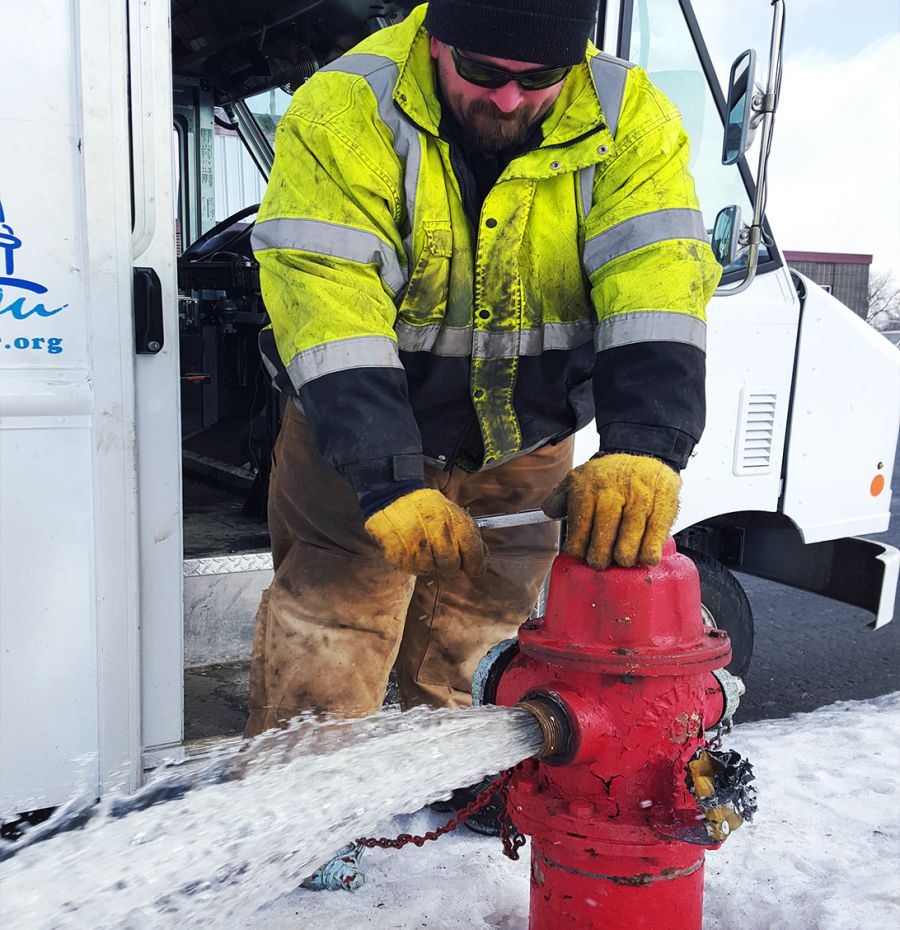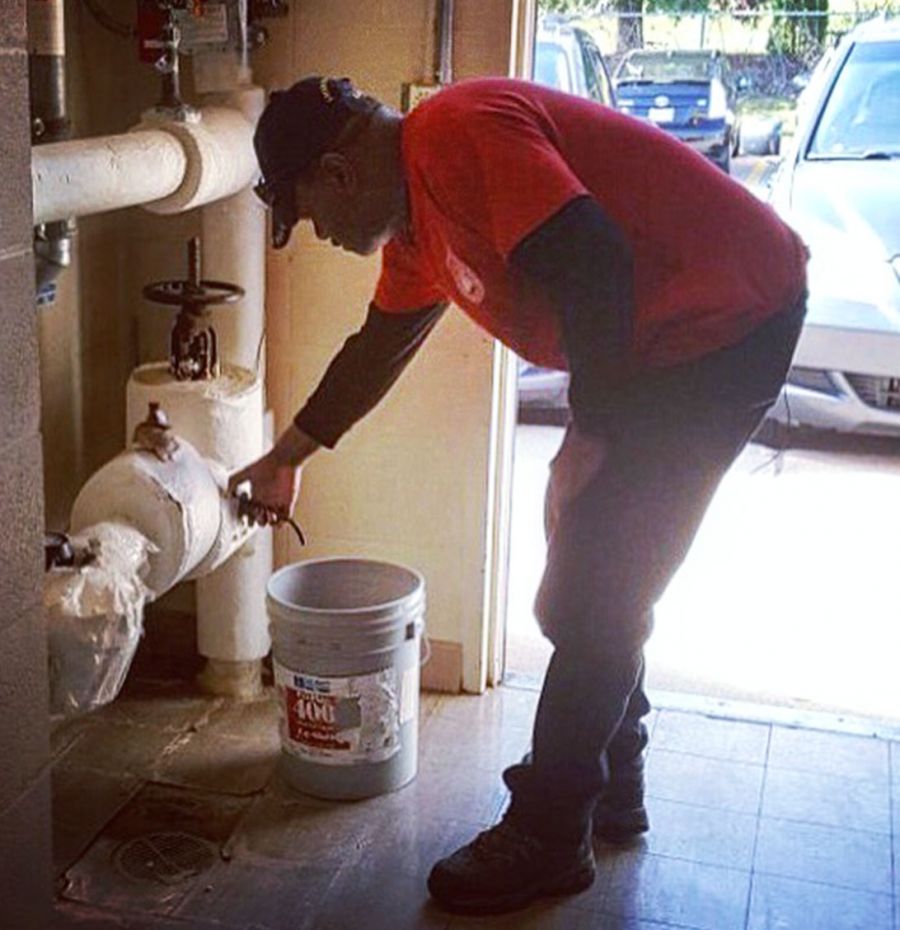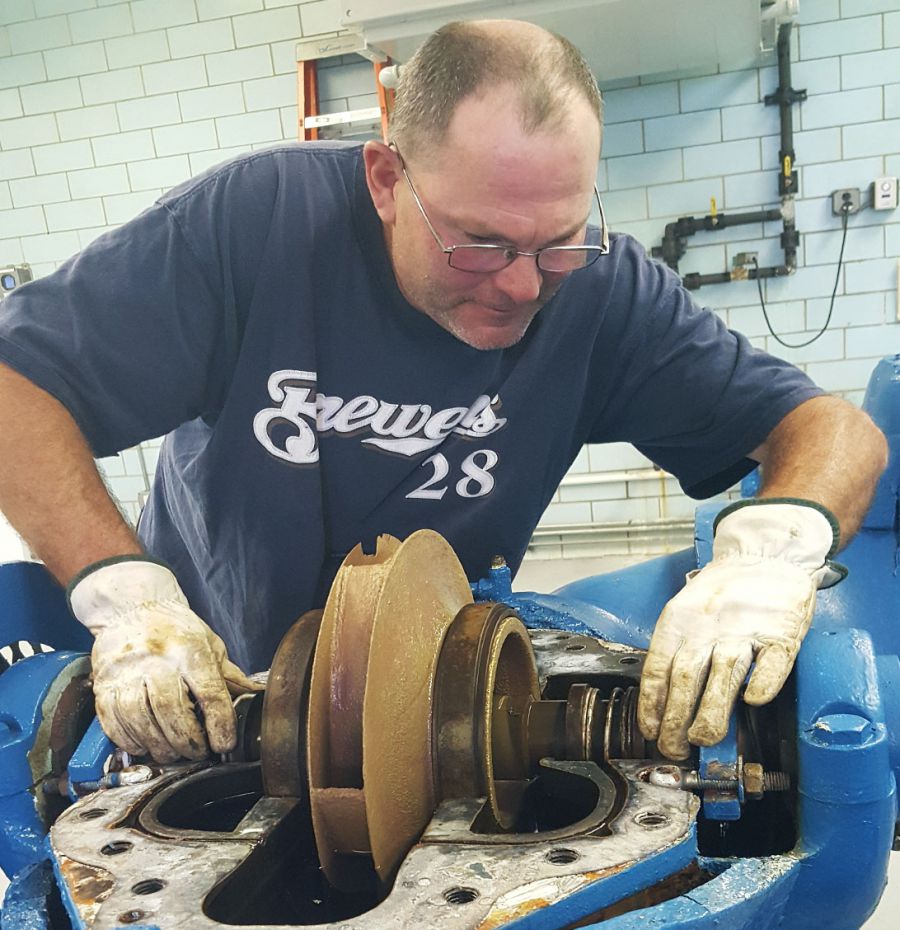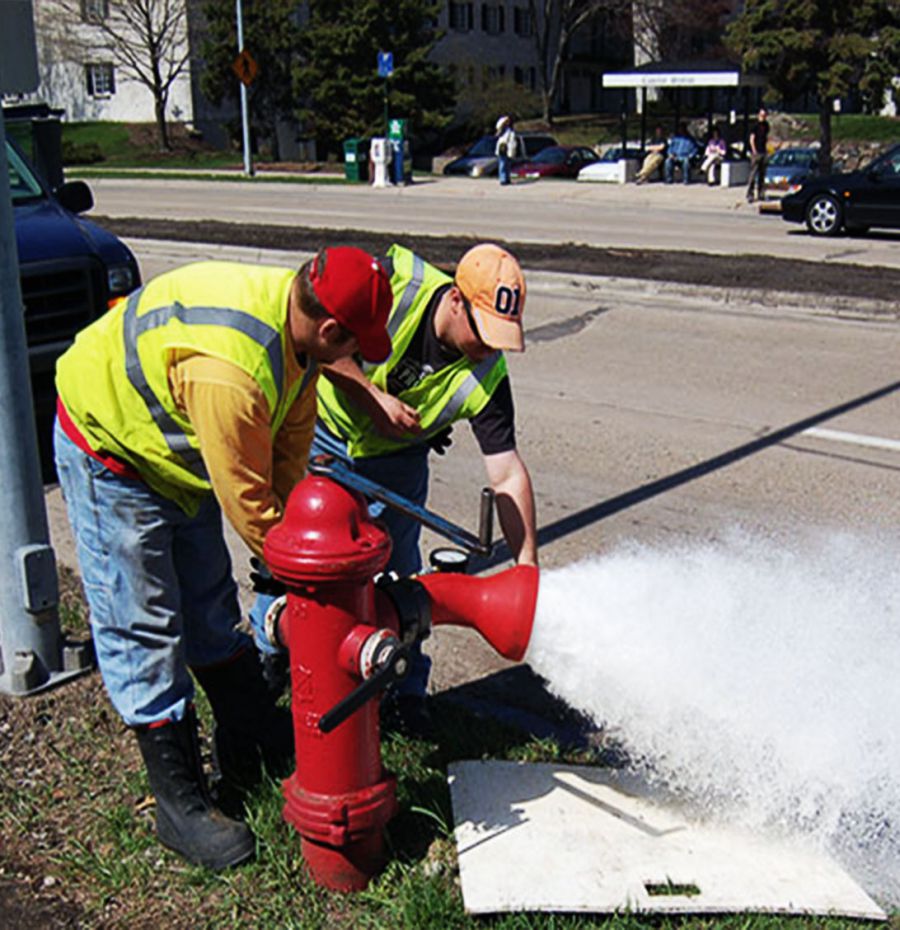Imagine a day without water
posted
Madison uses 27 million gallons of water a day. Can you imagine one day without it?
(Related story: More than a dozen area agencies, municipalities and non-profits are asking people to imagine a day without water.)

It takes 22 wells, 30 reservoirs, 860 miles of main, and about 125 people to get safe water to every home and business in Madison. As the Value of Water Coalition launches its “Imagine a Day Without Water” campaign (Sept.15th), here’s a look at what happens in one single day to keep safe water running in Madison.
12:00 a.m. Refilling Madison's reservoirs
While much of Madison is sleeping, pump operator Karmjit Singh sits in a central control room at Madison Water Utility and starts the slow process of refilling the city’s reservoirs.
“I need to look at all the reservoirs and see which need to be replenished,” says Singh. The work happens during overnight hours, when demand is the lowest. “We can take our time overnight. We can check each unit to make sure the systems are working well.”
Singh oversees the complex computer system that opens valves and turns on pumps at wells and reservoirs across the city. He watches carefully for any abrupt change in pressure that could cause a main break or stir up mineral sediment in mains, leading to discolored water.
“We have to be really cautious in how we operate everything.”
2:00 a.m. Responding to main breaks .jpg)
“Two a.m. is very common (for breaks),” says Madison Water Utility field supervisor Don Russell, who has spent decades fixing ruptured water mains in Madison. Madison Water Utility’s emergency crews repair around 200 main breaks every year, mostly during the winter. Many of those calls come in during the very early morning hours.
“You have to like the cold. Gotta like being outside,” Russell says. “If it’s below zero, so many people stop and tell us, ‘Thank you for being out here.’ People don’t realize how much they need their water until they go without. A lot of people tell us that. They take it for granted.”
5:00 a.m. Handling the morning water rush
 “At 5 o’clock everything’s getting busy. People are waking up, big buildings are filling up their water tanks to get ready for employees to come in,” says Singh, who has spent most of the night preparing for this moment.
“At 5 o’clock everything’s getting busy. People are waking up, big buildings are filling up their water tanks to get ready for employees to come in,” says Singh, who has spent most of the night preparing for this moment.
His challenge is make sure the system keeps pressure across the city steady as tens of thousands of people hop in the shower – all at pretty much the same time.
“We start shutting off certain bypass and pressure reducing valves just to make sure the pressure goes up accordingly. But the pressure will often keep going down, then we start running another pump just to make sure the pressure is even.”
Again, everything must happen carefully to avoid sudden pressure spikes that could wreak havoc on mains. That can mean an intense few hours for Singh.
“Knowing your job, loving your job and taking your job as a challenge. It helps a lot.”
 8:00 a.m. Hydrant maintenance crews hit the streets.
8:00 a.m. Hydrant maintenance crews hit the streets.
"It’s very important that every single hydrant in the city is well-maintained," says Joe Kennedy, one of three Madison Water Utility employees responsible for maintaining the city's 8,500 fire hydrants. “When the public needs them, when the fire department needs them, they have to be ready to go. The water utility is responsible for making that happen."
Kennedy says many people don't realize the volume of water can be pushed out of a single hydrant
"They can pump out quite a bit of water. The fire department, on most city hydrants, can expect to get a thousand gallons a minute."
Every hydrant in the city is checked at least every two years.
"We go through, make sure all the internal components are lubricated properly, check for leaks, drainage. Being in Wisconsin, we don’t want things to freeze up in the winter. "
 11:00 a.m. Water safety sampling underway
11:00 a.m. Water safety sampling underway
“Twice a week I come here and take a water sample,” says water quality specialist Ken Tarver, filling sample bottles inside Lindbergh Elementary on Madison’s North Side. “There are several schools within the city that I go to. I also go to fire departments, the airport … We have 24 sample sites.”
Madison Water Utility collects thousands of water samples every month, some taken at the utility’s wells, others taken out in the city’s neighborhoods.
“It’s pretty critical. This is my job. To make sure that the water is safe and that the community is protected.”
12:00 p.m. Fixing what’s broken
 “If something breaks, we figure out what the problem is and fix it … Nobody would have water if we didn’t,” says MWU maintenance supervisor Doug VanHorn. His crews care for just about every piece of machinery inside all 22 municipal well facilities. “We handle all the maintenance of the deep wells, the booster pumps, we remove and replace parts.”
“If something breaks, we figure out what the problem is and fix it … Nobody would have water if we didn’t,” says MWU maintenance supervisor Doug VanHorn. His crews care for just about every piece of machinery inside all 22 municipal well facilities. “We handle all the maintenance of the deep wells, the booster pumps, we remove and replace parts.”
The utility pulls about 8 tons of water from the ground every minute at every operating well in the city. When high-powered pumps and machinery are used day-in and day-out, parts often fail.
“We do some proactive work to try and keep things going, but there’s a lot of reactive work too. This is such a big system, things are bound to break.”
 2:00 p.m. Cleaning water mains
2:00 p.m. Cleaning water mains
Neighborhood by neighborhood, street by street, Madison Water Utility’s flushing crews work to clean the city’s water mains.
“It takes about 8 or 9 months, usually from April to Thanksgiving,” says Shayne Santi, who oversees the utility’s water main flushing program. “The goal is to flush the whole city one way or another.”
Hydrants are opened up to push out mineral sediment that has collected in the pipes over winter. More than 850 miles of main are flushed every year.
“Since we started the flushing program, overall the water quality is night and day, in the downtown area especially … I’ve had a lot of different water utilities call and ask about what’s we’re doing and ask for advice on how to get a flushing program going,” Shanti says.
4:30 p.m. Madison leans on its reservoirs
Four of the largest reservoirs in Madison hold a combined 17.2 million gallons of water, and they’ve been slowly draining all day. Now people are getting home from work – washing dishes, doing laundry, and yes, sometimes taking a second shower. A Madison Water Utility employee closely monitors the water levels in those reservoirs to make sure there’s enough supply on hand to make it through the end of the day.
“It’s a smaller surge in use compared to the morning,” says water supply manager Joe DeMorett. “The big reservoirs continue to empty, and we have to keep a close eye on them. And the smaller ones, we have to keep filling.”
As water use drops off for the night, more work gets underway to stabilize water pressure throughout the city.
“It’s kind of a constant battle. You’re trying to supply enough water, but as people start using less, pressures get too high. Then we have to start shutting things off.”
Then, while most of the city sleeps, Madison Water Utility slowly fills the reservoirs once again -- so they'll be ready for whatever tomorrow brings.
